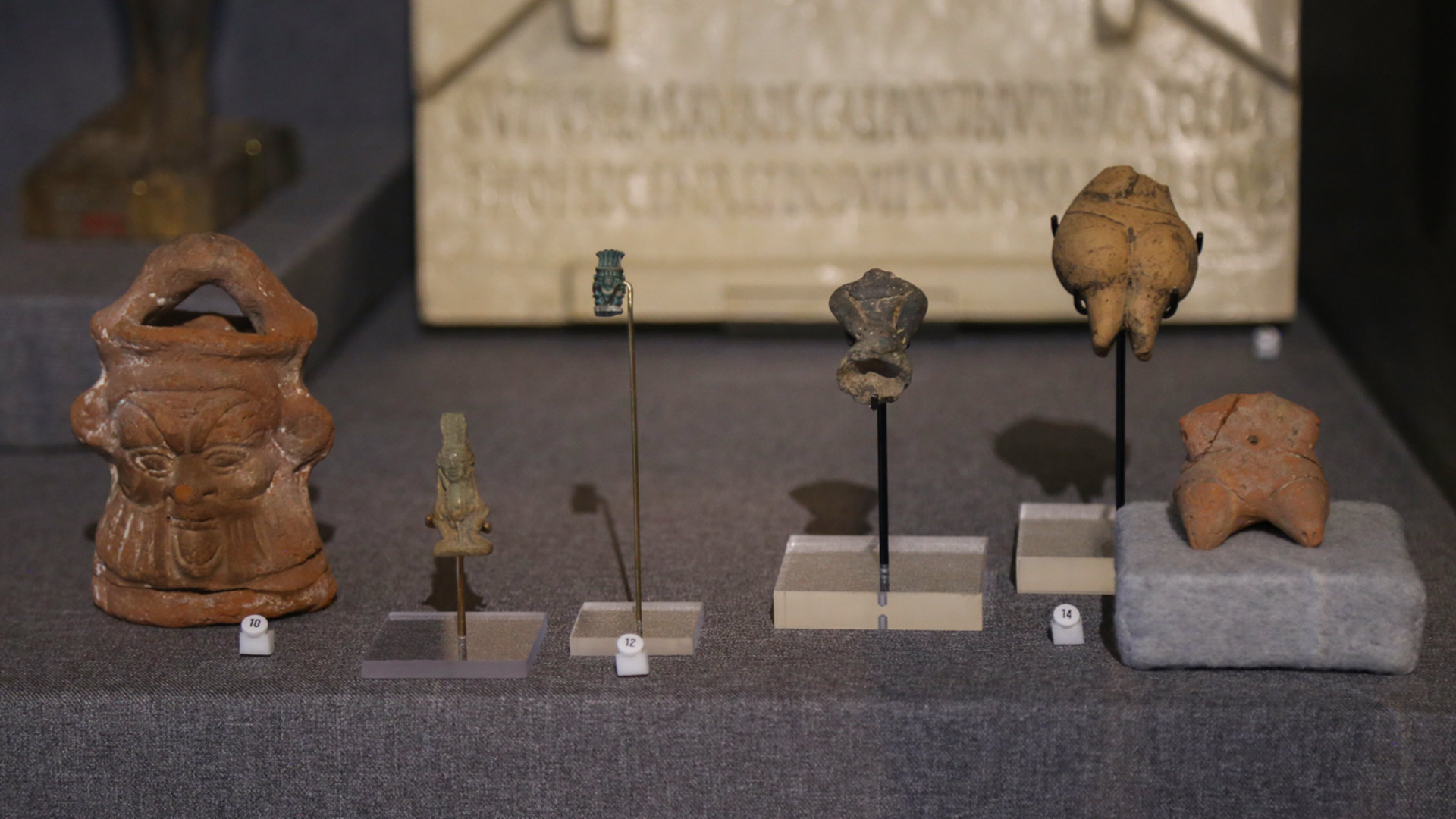
Disability
“Disability” is a modern and contested term. Are people deemed disabled by medicine, or does disability arise from social marginalization? To what extent do people with disabilities define their own identity?
These questions are especially hard to answer in the ancient Mediterranean, where medical and religious understandings of the body fluctuated. None of the cultures explored here had hard and fast definitions of disability, but all expressed an interest in how human bodies differ through birth, illness, injury, and experiences like pregnancy.
Scholars are especially eager to know how ancient disability was perceived. Were people with disabilities accepted? Discriminated against? Celebrated? Supported?
This area of research is hotly debated, but what we do know is that different disabilities had different meanings. Ancient Egyptians, for example, seem to have respected and appreciated dwarfism while stigmatizing mental illness.
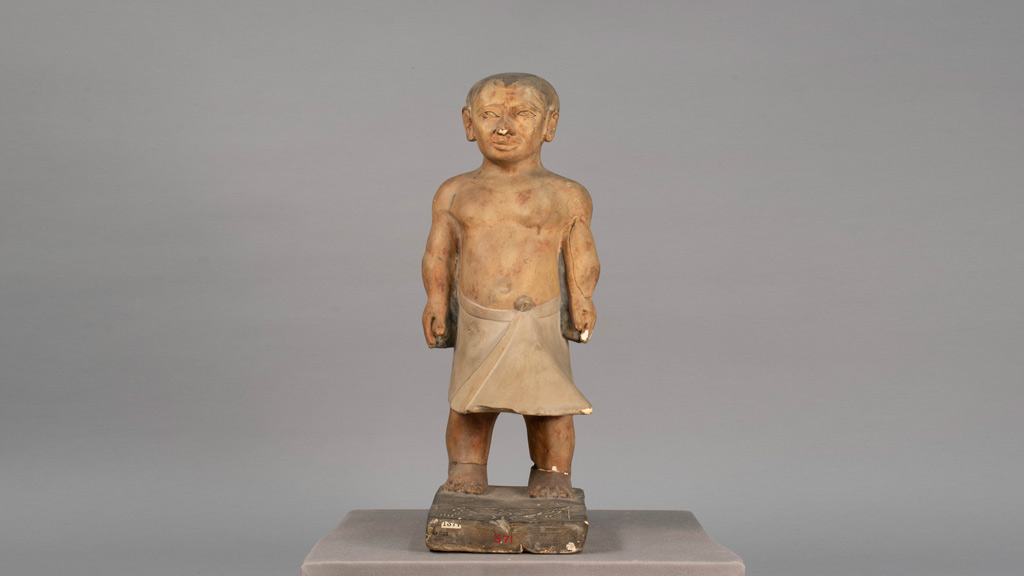 Statue of Khnumhotep This wealthy man had a type of dwarfism and served the court as Holder of the Royal Linen and Overseer of the Ka-priests, both very high honors. It is hard to know what daily life was like for non-elites of short stature, but evidence from the upper levels of society indicates that dwarfism did not exclude people from marrying, serving in religious roles, or running government. Khnumhotep’s family was proud to represent him as a little person. Old Kingdom Egypt Plaster cast; original held by the Egyptian Museum in Cairo 2500–2250 BCE 1948.01.0022
Statue of Khnumhotep This wealthy man had a type of dwarfism and served the court as Holder of the Royal Linen and Overseer of the Ka-priests, both very high honors. It is hard to know what daily life was like for non-elites of short stature, but evidence from the upper levels of society indicates that dwarfism did not exclude people from marrying, serving in religious roles, or running government. Khnumhotep’s family was proud to represent him as a little person. Old Kingdom Egypt Plaster cast; original held by the Egyptian Museum in Cairo 2500–2250 BCE 1948.01.0022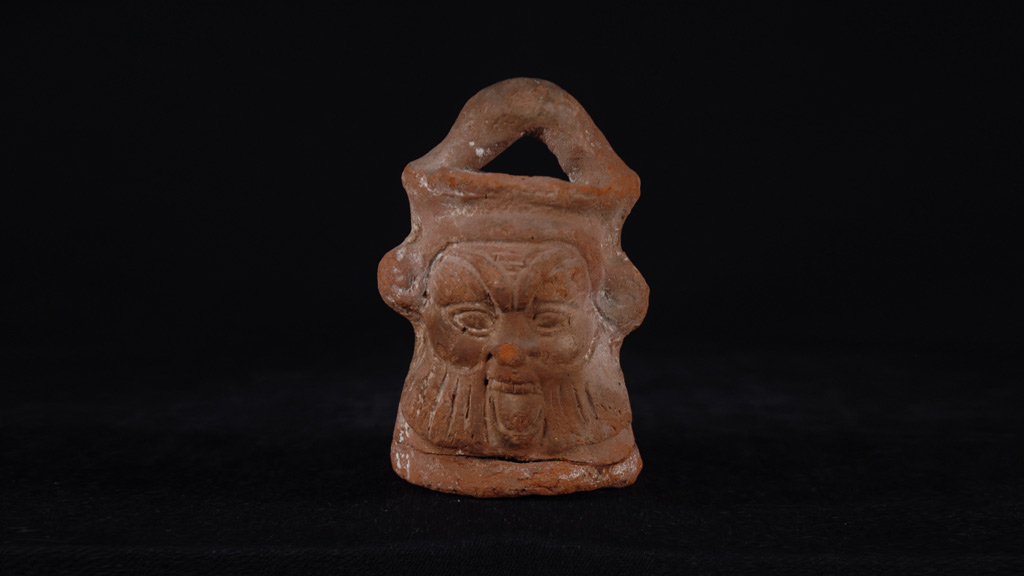 Jug in the Shape of the God Bes The god Bes sticks his tongue out to scare off evildoers. Though not obvious here, his beard and ears often appear lion-like. Bes was one of several dwarf gods in ancient Egypt. Associated with the sun god Ra, these gods were believed to play an important role in running the cosmos. For example, Bes also appears as a wine-bearer and companion of the goddess Hathor. This jug may have been used for rituals dedicated to Hathor, or Bes himself. Ptolemaic Egypt Ceramic; terracotta 300–30 BCE 1922.01.0220
Jug in the Shape of the God Bes The god Bes sticks his tongue out to scare off evildoers. Though not obvious here, his beard and ears often appear lion-like. Bes was one of several dwarf gods in ancient Egypt. Associated with the sun god Ra, these gods were believed to play an important role in running the cosmos. For example, Bes also appears as a wine-bearer and companion of the goddess Hathor. This jug may have been used for rituals dedicated to Hathor, or Bes himself. Ptolemaic Egypt Ceramic; terracotta 300–30 BCE 1922.01.0220
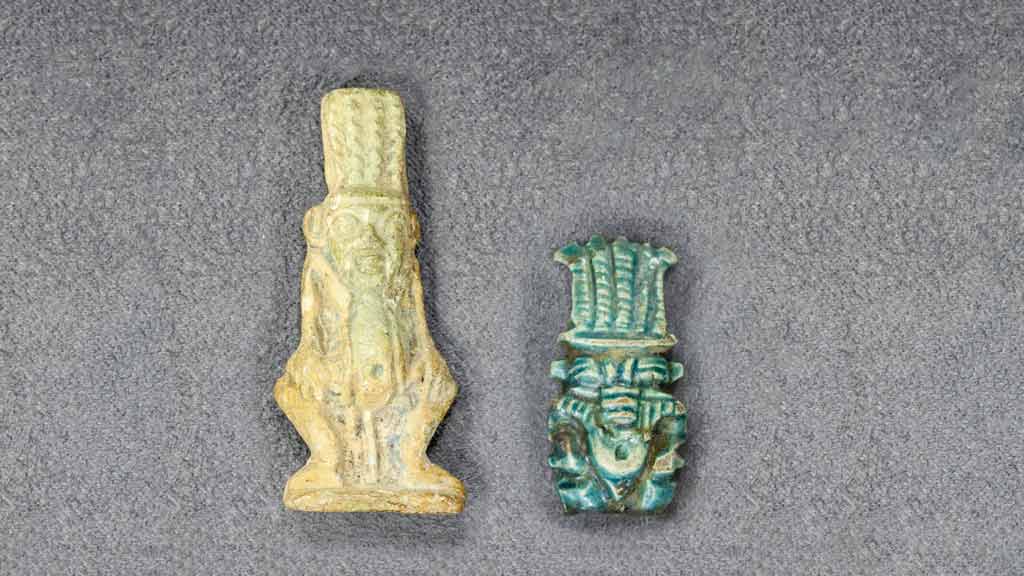 Figurines of the God Bes These figurines of Bes show off his short stature and ostrich feather headdress. Like other dwarf gods, Bes was a protective figure. In particular, he had charge of pregnant people and new birth parents, children, warriors, and people asleep or deceased. Egyptians believed that these states marked crucial and dangerous times when a person needed protection from evil forces. Bes figurines might have been worn by people in labor or used in rituals to protect them, dedicated to Bes to thank him for a safe delivery, or buried with the dead to ease passage to the afterlife. Ptolemaic Egypt Stone 300–30 BCE 2004.02.0002
Figurines of the God Bes These figurines of Bes show off his short stature and ostrich feather headdress. Like other dwarf gods, Bes was a protective figure. In particular, he had charge of pregnant people and new birth parents, children, warriors, and people asleep or deceased. Egyptians believed that these states marked crucial and dangerous times when a person needed protection from evil forces. Bes figurines might have been worn by people in labor or used in rituals to protect them, dedicated to Bes to thank him for a safe delivery, or buried with the dead to ease passage to the afterlife. Ptolemaic Egypt Stone 300–30 BCE 2004.02.0002
Egypt, Third Intermediate Period Glass; faience 664–630 BCE 1992.04.0016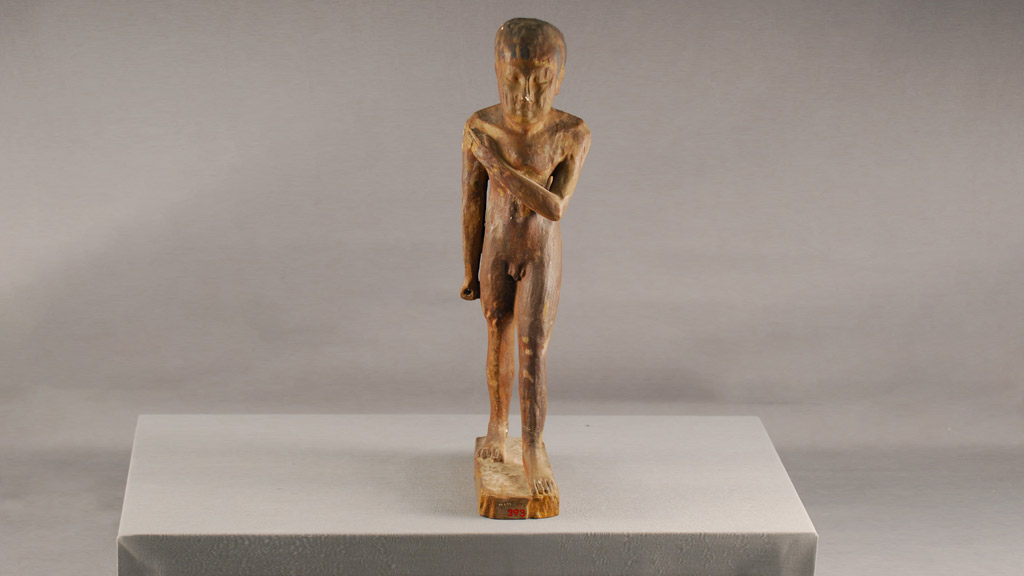 Figurine of Young Man with Curved Spine A young man strides forward with his left leg while emphasizing a curved spine with his right hand. Figures with curved spines are common in ancient Egyptian art, where they are often depicted as gardeners or craftspeople. This may reflect the actual occupations of people with this disability. Old Kingdom Egypt Plaster cast; original held by the Egyptian Museum in Cairo 2500–2250 BCE 1948.01.0034
Figurine of Young Man with Curved Spine A young man strides forward with his left leg while emphasizing a curved spine with his right hand. Figures with curved spines are common in ancient Egyptian art, where they are often depicted as gardeners or craftspeople. This may reflect the actual occupations of people with this disability. Old Kingdom Egypt Plaster cast; original held by the Egyptian Museum in Cairo 2500–2250 BCE 1948.01.0034
Neolithic Figurines
These clay torsos from Neolithic Greece have traditionally been called “Venus” figurines and considered symbols of fertility. Almost always understood as women, they are sometimes labeled “obese” and other times “pregnant.”
But scholars have started to rethink this narrow focus on gender, wondering how these figurines may have meant different things to different users: as objects of worship or instruments of healing, pieces in a children’s game, or economic tokens exchanged by different communities.
-
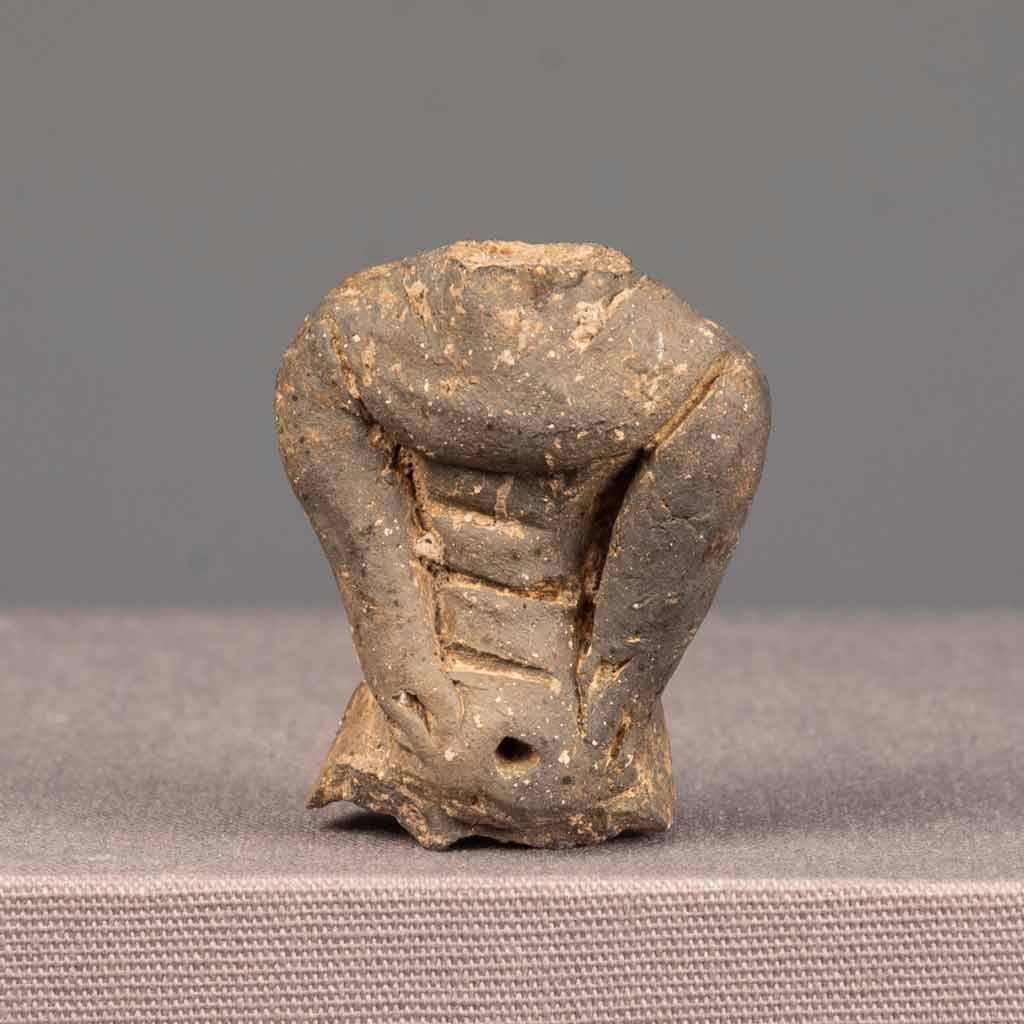 Pregnant Female Torso (1998.18.0001)
Pregnant Female Torso (1998.18.0001) -
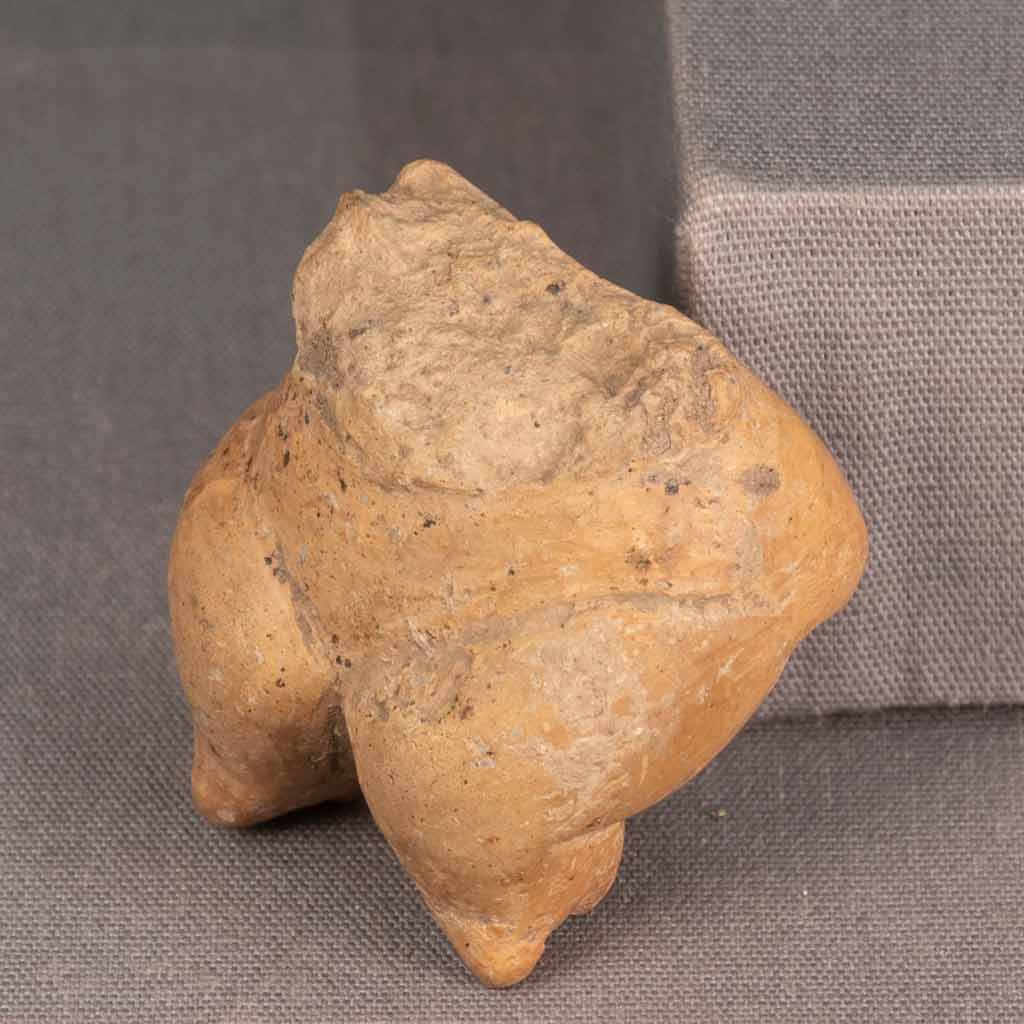 Female Lower Torso (1998.18.0008)
Female Lower Torso (1998.18.0008) -
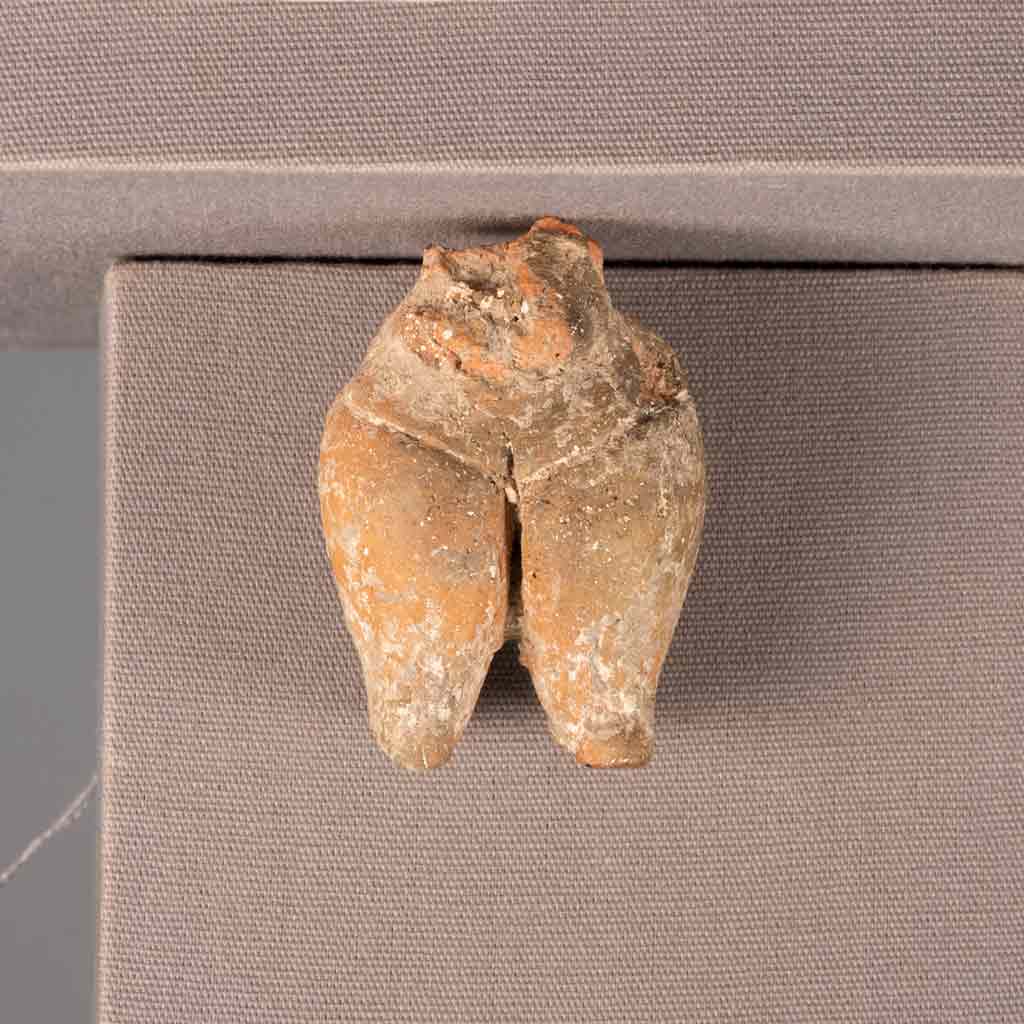 Female Torso (1998.18.0014)
Female Torso (1998.18.0014)
-
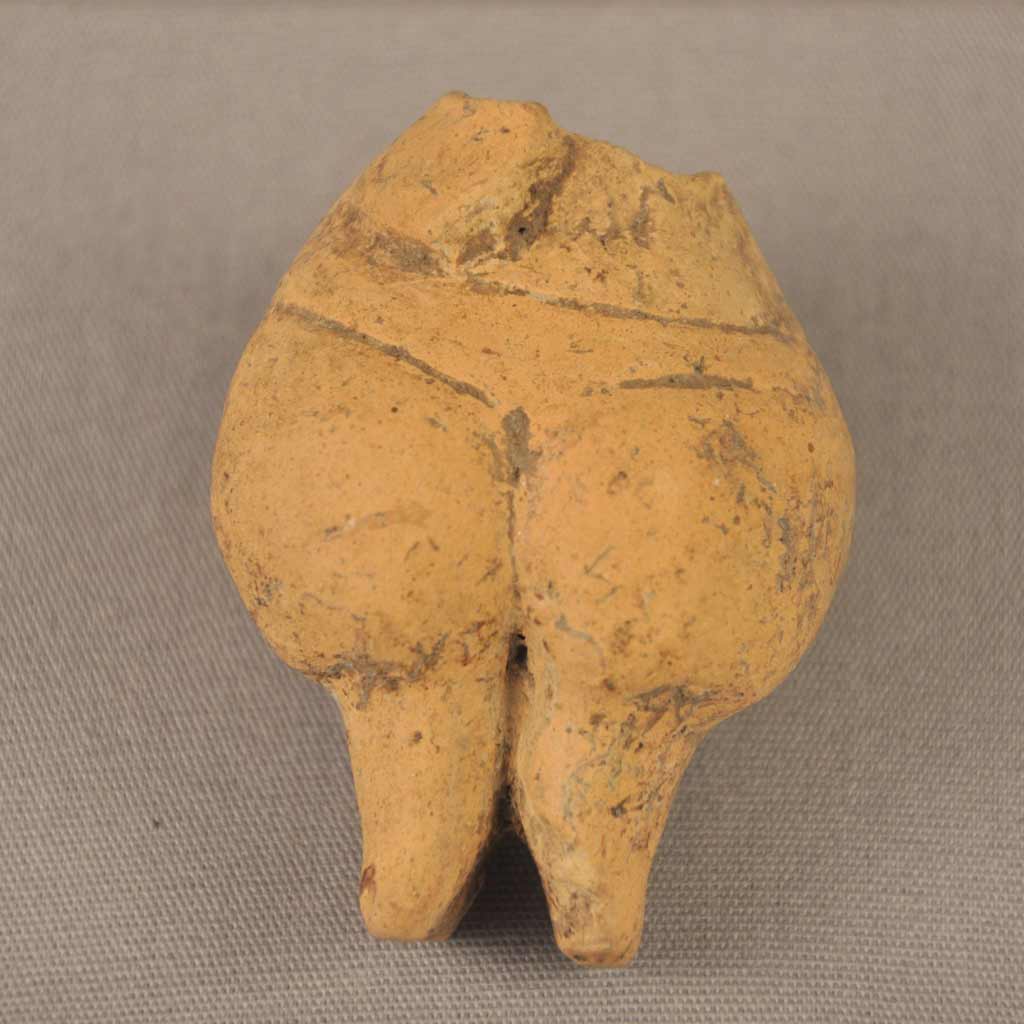 Venus (2000.17.0108)
Venus (2000.17.0108) -
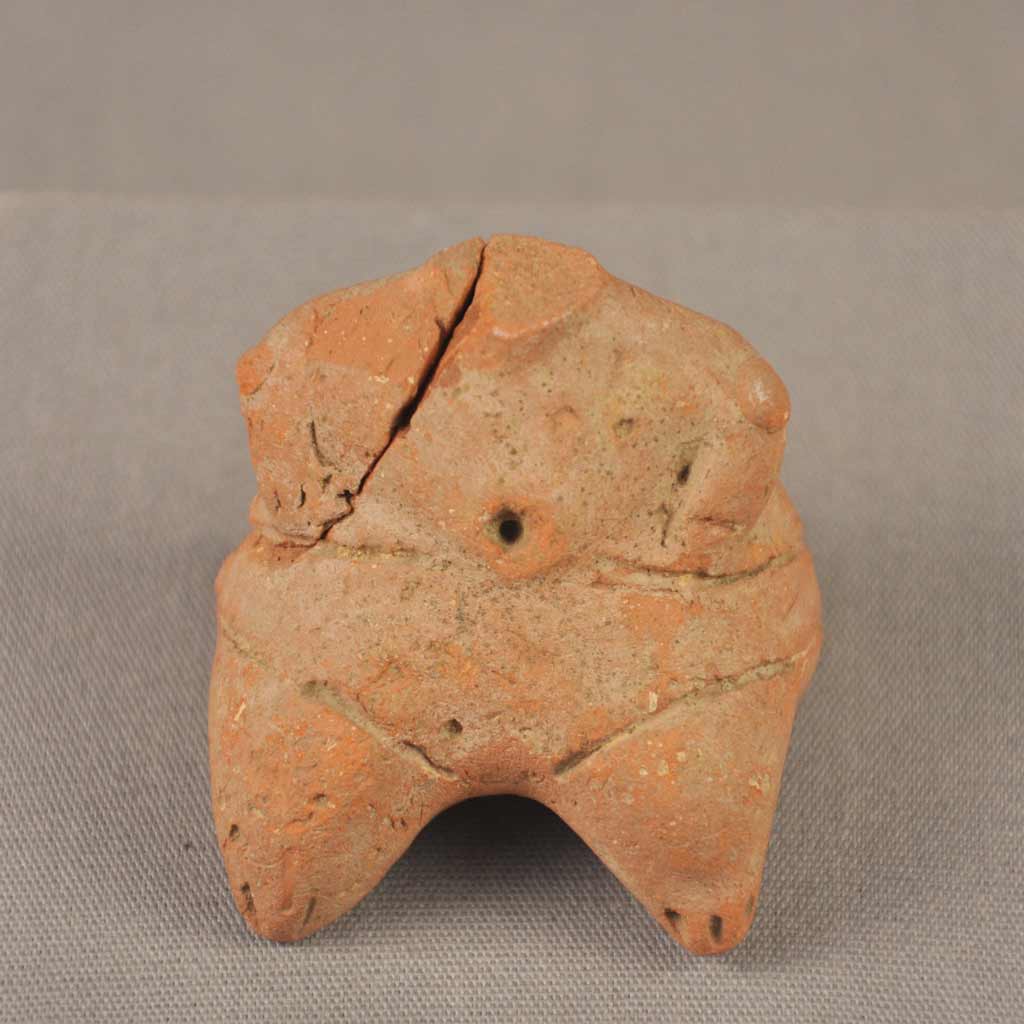 Venus (2000.17.0110)
Venus (2000.17.0110) -
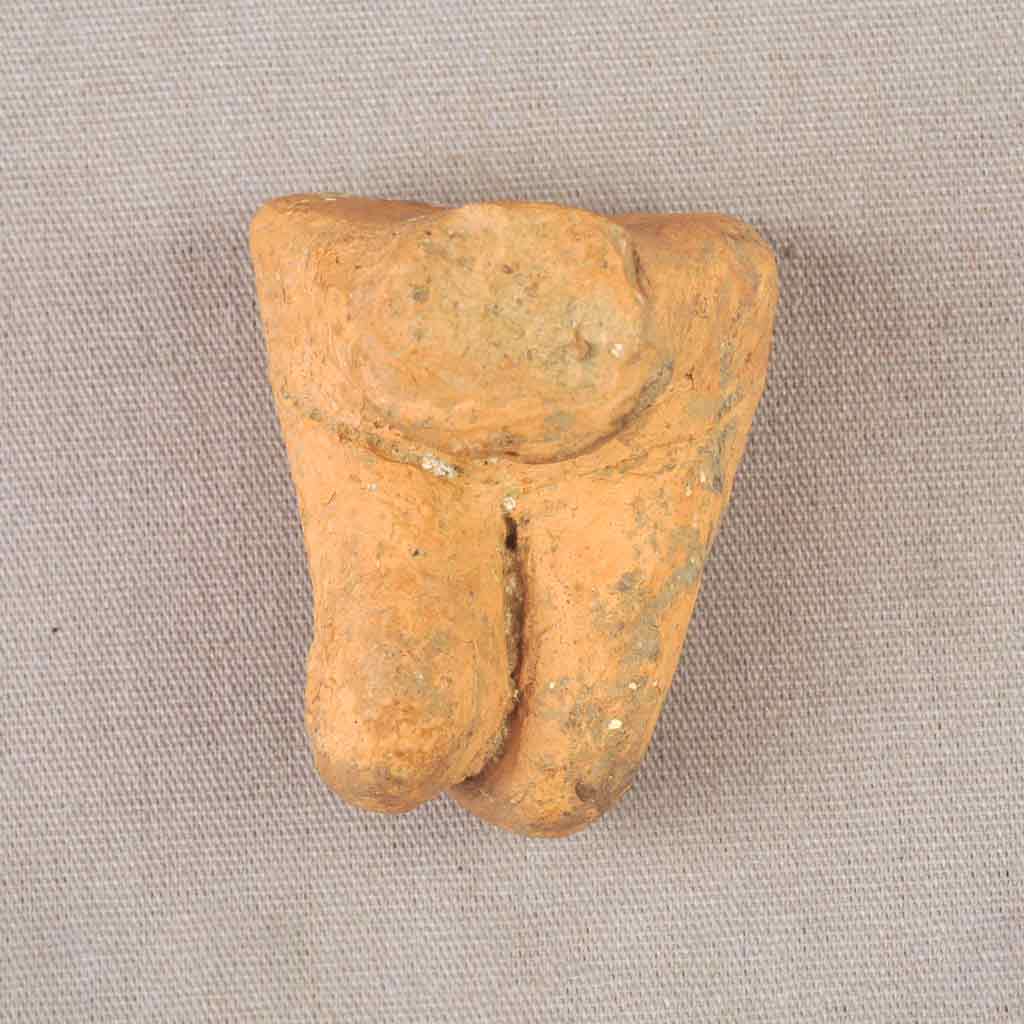 Lower Torso and Legs (2002.14.0001)
Lower Torso and Legs (2002.14.0001)
-
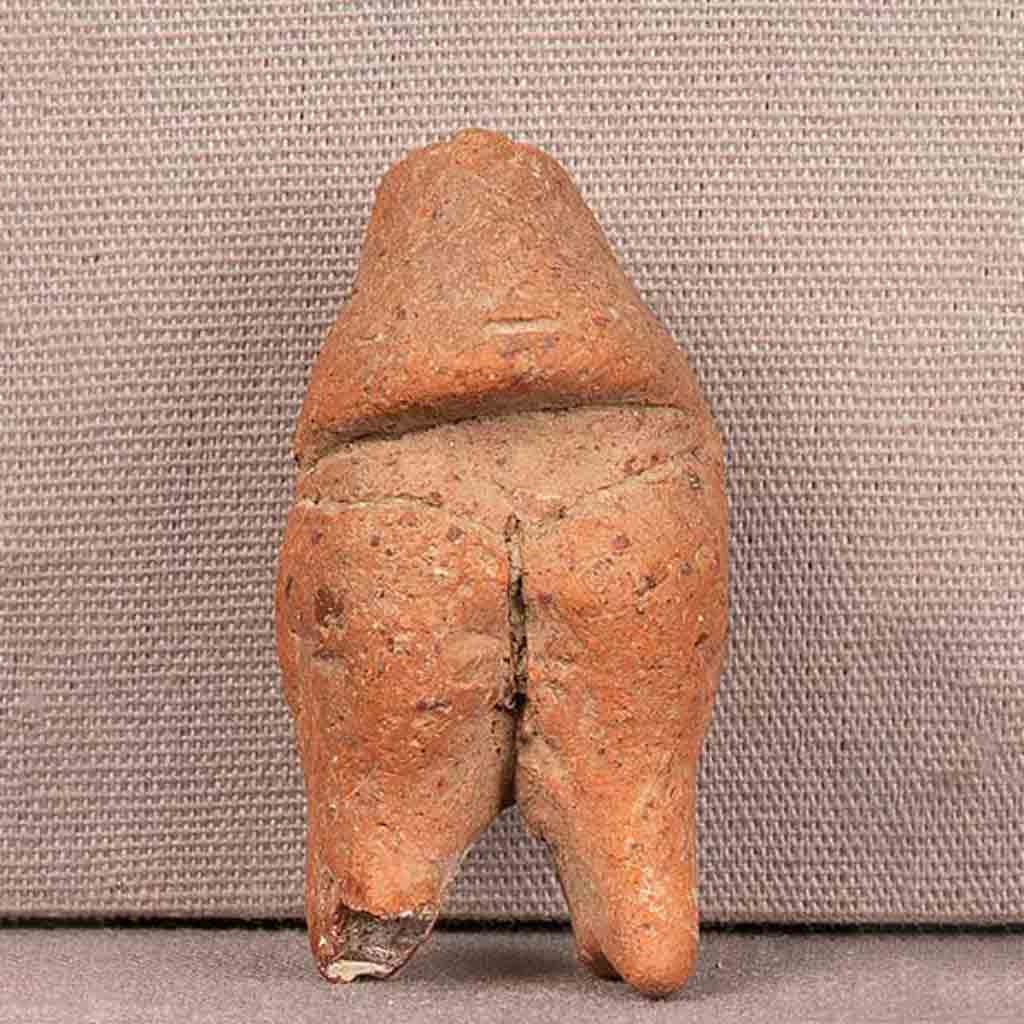 Pregnant Female Torso (1998.18.0015)
Pregnant Female Torso (1998.18.0015)
How we interpret these figurines matters. Though pregnancy is often experienced as a disability, it is also celebrated in society. Fatness, on the other hand, is hugely stigmatized, a cause of discrimination and internalized shame especially for people who present as feminine. When these figurines are labeled “pregnant” their fatness is redeemed; when “obese” they are associated with illness.
Votive Tablet
This plaster cast of a tablet from Roman occupied Greece thanks the god Asclepius for the healing of Cutius Gallus’ ears. People across the ancient Mediterranean dedicated representations of body parts including eyes, breasts, limbs, hair, and genitals to request or thank the gods for healing. Anatomical votives are used today by religious practitioners in many parts of the world.
-
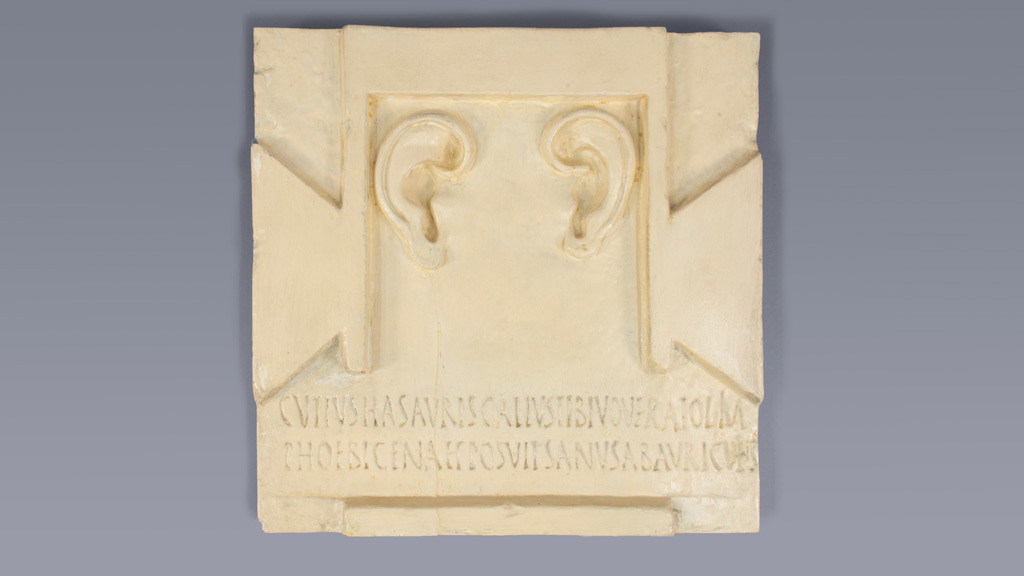 Votive Ansate Tablet (1900.12.0090)
Votive Ansate Tablet (1900.12.0090)
The Latin inscription reads:
Cutius has auris Gallus tibi voverat olimPhoebigena et posuit sanus ab auriculis
Translation: "Cutius Gallus once vowed these ears to you, son of Phoebus [i.e. Asclepius] and dedicates them to you now that his ears are healed."
Phoebus is another name for the god Apollo.